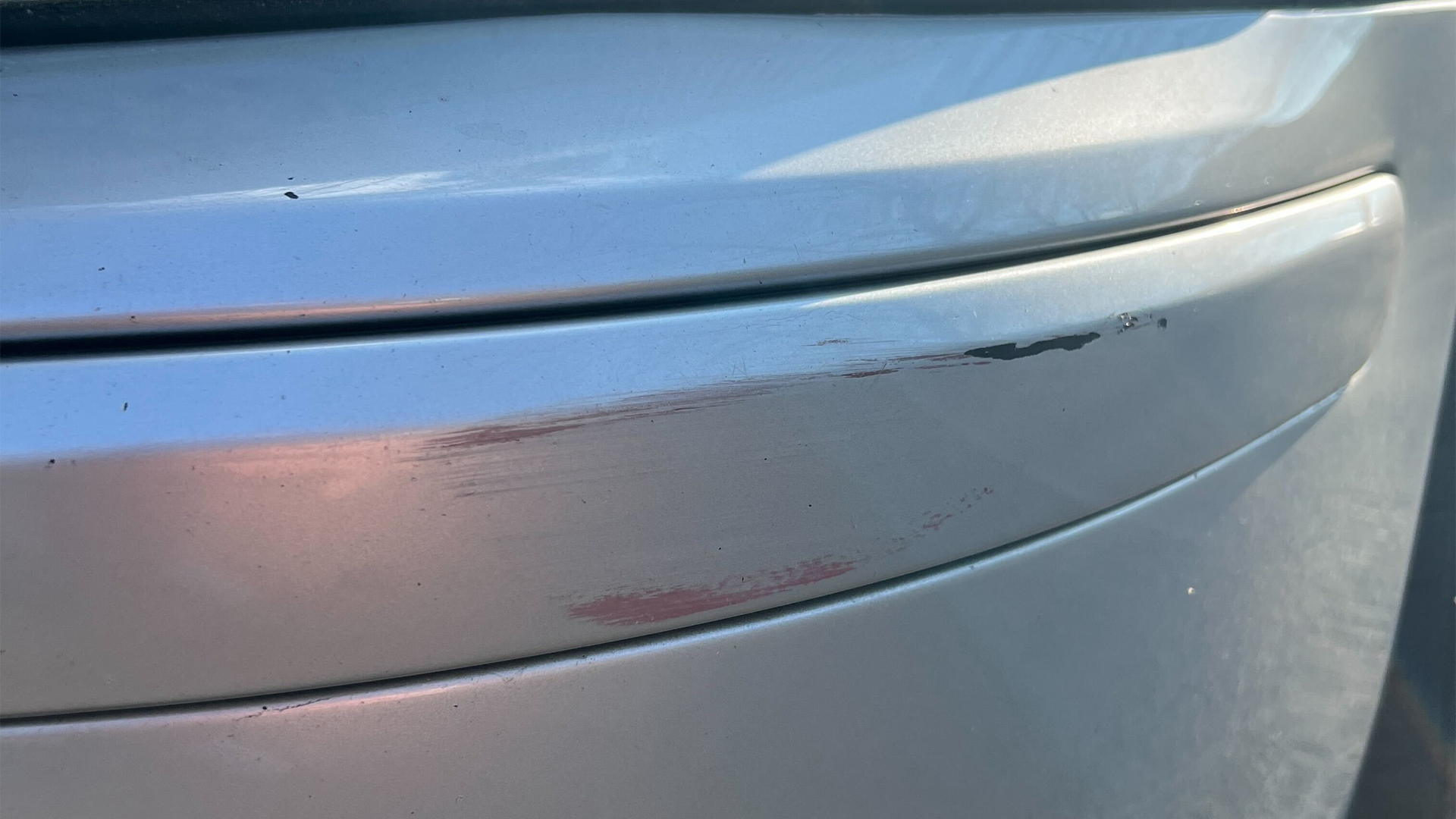

We may earn revenue from the products available on this page and participate in affiliate programs. Learn more ›
For some unknown reason, automotive manufacturers have yet to source vibranium for an impenetrable vehicle-protecting shield. These companies say they’re all about prioritizing safety, yet the obvious answer has only been applied to Shield’s helicarriers. Weak!
Until Wakanda gives up the secrets behind its tech, we’re stuck with regular cars that are vulnerable to dents, dings, scratches, and paint transfer. Paint transfer is when the paint from another vehicle, a wall, or other roadside obstacle jumps off its original surface and clings to your car during harsh contact. Pro tip: Yellow paint doesn’t look too great on your pearly white bumper.
In some cases, a collision will require a new part or professional bodywork, but many times, the everyday DIYer can erase paint transfer fairly easily. The Drive’s crack info team has covered up all sorts of encounters with door dings, errant parking lot racers, and giant yellow safety poles, and we’d like to share our learnings with you! Let’s examine what you need and how to handle the job.
Everything You’ll Need To Get Paint Off Your Car
We’re not psychic, nor are we snooping through your toolbox or garage, so here’s exactly what you’ll need to get the job done.
Tools and Parts
- Two microfiber towels
- Polishing compound, scratch repair product, or mild adhesive remover
- Safety glasses
- Mechanic gloves or nitrile gloves

Step 1: Removing the Paint
- Park the car in a cool area away from direct sunlight.
- Add a small amount of remover or compound to your microfiber towel.
- If using products specially formulated for this purpose, lightly rub the affected area in small circles, slowly increasing pressure as the remover is spread over the paint. If you’re using adhesive remover, use small amounts, be quick and deliberate, use light brush strokes with the towel, and don’t let it sit.
- With a dry part of the microfiber towel or a different towel, wipe away excess remover and buff the area.
- If paint remains, repeat steps 3 and 4 until the area is clear.
Step 2: Assessing the Damage
Once the paint is off, use your senses of touch and sight to inspect just how bad the scrape is (again, if we had superhero powers, we would just heal the car with the touch of a finger). If it cuts through the clear coat and into your own car’s paint, you might need to use touch-up paint on the area.
If you see the scratch goes down to the metal, you will need to treat the area to prevent rust. Additional polishing compound application and buffing can also help smooth out any roughness left after the paint.
For more information on how to handle scratches, visit The Drive’s guide, How To Remove Scratches From a Car.
Video
